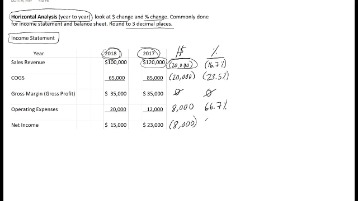After a series of transactions, therefore, the sum of all the accounts with a debit balance will equal the sum of all the accounts with a credit balance. To illustrate double entry, let’s assume that a company borrows $10,000 from its bank. The company’s Cash account must be increased by $10,000 and a liability account must be increased by $10,000. Hence, the account Cash will be debited for $10,000 and the liability Loans Payable will be credited for $10,000. In single-entry accounting, when a business completes a transaction, it records that transaction in only one account. For example, if a business sells a good, the expenses of the good are recorded when it is purchased the good, and the revenue is recorded when the good is sold.
- The cash (asset) account would be debited by $10,000 and the debt (liability) account is credited by $10,000.
- To account for the credit purchase, a credit entry of $250,000 will be made to notes payable.
- There are several different types of accounts that are used widely in accounting – the most common ones being asset, liability, capital, expense, and income accounts.
- This is always the case except for when a business transaction only affects one side of the accounting equation.
Accountants in the 1400s used pen and paper for their record keeping, painstakingly keeping track of each double entry. This practice ensures that the accounting equation always remains balanced; that is, the left side value of the equation will always match the right side value. Under the double entry system, errors are identified timely and the necessary corrections are made before the next step. Under the double entry system, profits and liabilities are evaluated by using various financial ratios.
The two rules of double-entry accounting refer to the systematic recording of transactions using debits and credits. For every transaction completed in your business, you must debit one account and credit another for the same amount. Double-entry accounting and double-entry bookkeeping both use debits and credits to record and manage financial transactions. The chart of accounts is a different category group for the financial transactions in your business and is used to generate financial statements.
Double Entry Accounting
Your accounts must always have the debit amount equal to the credit amount for this method to work. Proper recording of transactions in this way will mean an accurate tracking of cash flow and an overall balanced financial depiction of your small business. If this were the ledger of a small business, we can see that they sold a service for $500. This means that on their balance sheet, their assets would be debited, and their revenue, or sales, would be credited. The next Assets entry shows that the business needed to pay their utility bills, so they therefore credited their assets, or cash, $300, and debited their expenses $300.
Drawing out a T-account can help you visualize and perfect this debit and credit entry method. As the name suggests, to create this visualization, draw a capital letter T on paper. This will give you room to place the account type at the top of the T while creating a left side and right side for your corresponding debit and credit entries.

In the double entry system, there will be a dual aspect of every transaction, which means it records both credit and debit transactions simultaneously. Most modern accounting software, like QuickBooks Online, Xero and FreshBooks, is based on the double-entry accounting system. Now that we have talked about the double entry bookkeeping system, let’s move on to recording journal entries.
Types of Accounts
The normal balance in such cases would be a debit, and debits would increase the accounts, while credits would decrease them. Once one understands the DEAD rule, it is easy to know that any other accounts would be treated in the exact opposite manner from the accounts subject to the DEAD rule. The double-entry system began to propagate for practice in Italian merchant cities during the 14th century.

An important point to remember is that a debit or credit does not mean increase and decrease, respectively. However, a simple method to use is to remember a debit entry is required to increase an asset account, while a credit entry is required to increase a liability account. An example of double-entry accounting would be if a business took out a $10,000 loan and the loan was recorded in both the debit account and the credit account. The cash (asset) account would be debited by $10,000 and the debt (liability) account is credited by $10,000.
Helps Companies Make Better Financial Decisions
It is not used in daybooks (journals), which normally do not form part of the nominal ledger system. Maintaining two or more accounts for every single business transaction is called a double entry system. Now, you can look back and see that the bank loan created $20,000 in liabilities. For example, when you take out a business loan, you increase (credit) your liabilities account because you’ll need to pay your lender back in the future. You simultaneously increase (debit) your cash assets because you have more cash to spend in the present.
Brown-Forman Reports First Quarter Fiscal 2024 Results ; Reaffirms … – Brown-Forman Corporation
Brown-Forman Reports First Quarter Fiscal 2024 Results ; Reaffirms ….
Posted: Wed, 30 Aug 2023 12:45:05 GMT [source]
Debits are recorded on the left side of the general ledger and credits are recorded on the right. The sum of every debit and its corresponding credit should always be zero. Accounting software usually produces several different types of financial and accounting reports in addition to the balance sheet, income statement, and statement of cash flows. A commonly used report, called the “trial balance,” lists every account in the general ledger that has any activity. Credits to one account must equal debits to another to keep the equation in balance.
Is double-entry accounting necessary?
When you pay for the domain, your advertising expense increases by $20, and your cash decreases by $20. When you receive the money, your cash increases by $9,500, and your loan liability increases by $9,500. Double-entry bookkeeping was developed in the mercantile period of Europe to help rationalize commercial transactions and make trade more efficient. It also helped merchants and bankers understand their costs and profits. Some thinkers have argued that double-entry accounting was a key calculative technology responsible for the birth of capitalism.
- Assume that Alpha Company buys $5,000 worth of furniture for its office and pays immediately in cash.
- Under the double entry system, profits and liabilities are evaluated by using various financial ratios.
- In this instance, one asset account (cash) is increased by $200, while another asset account (accounts receivable) is reduced by $200.
- This helps accountants, company management, analysts, investors, and other stakeholders assess the company’s performance on an ongoing basis.
If you’d only entered the $200 as a deposit, your bank account balance would be accurate, but your utility expense would be too high. This is how you would record your coffee expense in single-entry accounting. While having a record of these transactions is a good first step toward better managing your cash flow, this type of recording doesn’t make clear the impact each transaction has on your business.
Account types
In double entry accounting, the total of all debit entries must match the total of all credit entries. Double-entry bookkeeping is an accounting method where each transaction is recorded in 2 or more accounts using debits and credits. A debit is made in at least one account and a credit is made in at least one other account.
Keeping these books requires experienced people having both theoretical and practical knowledge. My Accounting Course is a world-class educational resource developed by experts to simplify accounting, finance, & investment analysis topics, so students and professionals can learn and propel their careers.
Debits and Credits
Double entry also requires that one account be debited and the other account be credited. Accounting software might record the effect on one account automatically and only require information on the other account. The products on the market today are designed with business owners, not accountants, in mind. double entry accounting Even if your knowledge of accounting doesn’t extend beyond Accounting 101, you’ll find most accounting software applications easy to use. Double-entry bookkeeping’s financial statements tell small businesses how profitable they are and how financially strong different parts of their business are.
With courses like these under your belt, you’re well on your way to becoming a successful accountant. Add double entry accounting to one of your lists below, or create a new one. When a company pays a six-month insurance premium, the company’s asset Cash is decreased and its asset Prepaid Insurance is increased. Each month, one-sixth of the premium is recorded as Insurance Expense and the balance in Prepaid Insurance is reduced. When a company borrows money from a bank, the company’s asset Cash is increased and the company’s liability Notes Payable or Loans Payable is increased.
With double-entry accounting, when the good is purchased, it records an increase in inventory and a decrease in assets. When the good is sold, it records a decrease in inventory and an increase in cash (assets). Double-entry accounting provides a holistic view of a company’s transactions and a clearer financial picture. To account for the credit purchase, entries must be made in their respective accounting ledgers. Because the business has accumulated more assets, a debit to the asset account for the cost of the purchase ($250,000) will be made.
